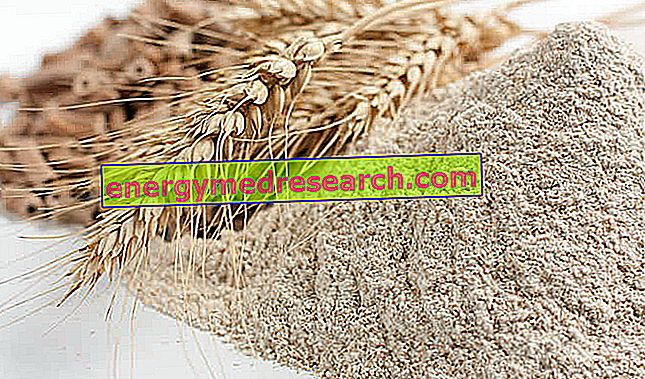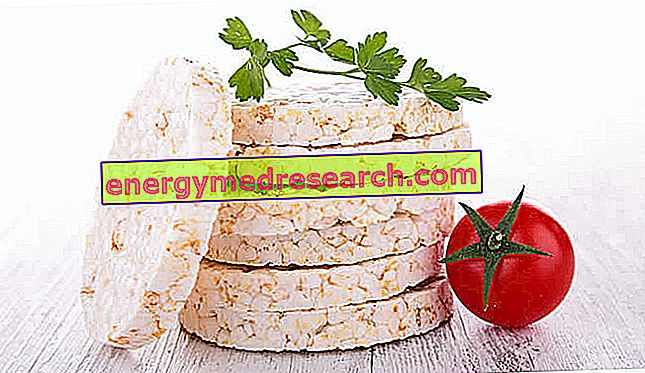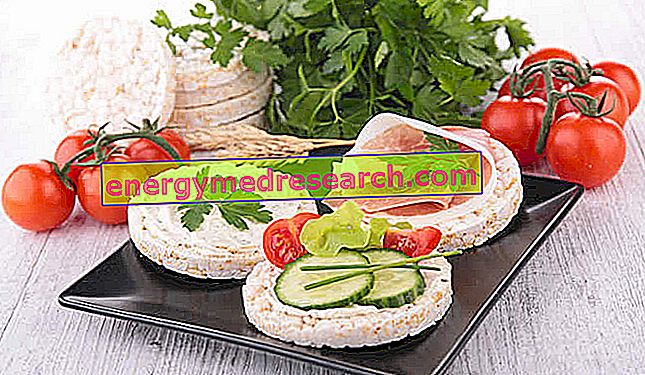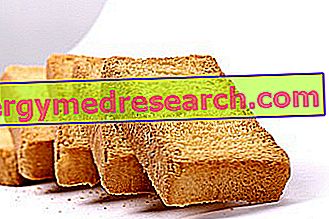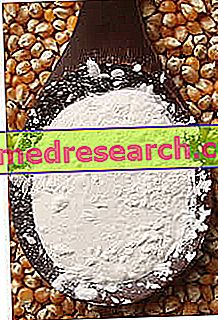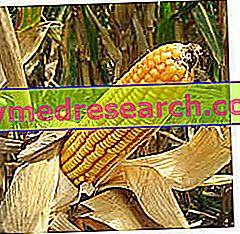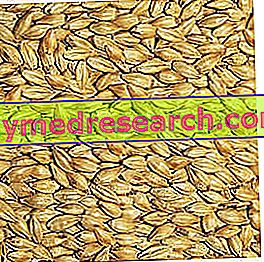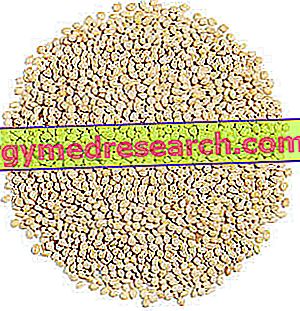What's this ? Whole wheat flour is a food product obtained from the milling of soft wheat kernels ( Triticum aestivum ), previously released from foreign substances and impurities. The whole wheat flour has a powdery consistency and is aimed at mixing with liquid and / or fat ingredients (water, oil or eggs), to give rise to many mixtures of typically Mediterranean origin (such as bread and pasta)
Category cereals and derivatives
What are? Rice cakes (in English puffed rice cake ) are food products characterized by a thin circular shape, with an extremely reduced weight. They are produced from a mixture of puffed rice and food adhesive, modeled and then dried. NB . Puffed rice for cakes is made by heating the seeds of the cereal with steam and in high-pressure environments, although the method may differ depending on the specific product
Nutritional Features Rice cakes are a very caloric food, which provides about 35kcal per unit (10g) and just under 400kcal per 100g. From this first statement we can deduce that rice cakes are not exactly the prototype of diet food; moreover, they are much more energetic than traditional bread. The latter provides on average slightly less than 300kcal / 100g, so a single slice of bread (from 25-30g) provides about 75-90kcal
Generality The breadsticks belong to the third group of foods, which includes cereals and their derivatives but also tubers (bread, wheat, breadsticks, rusks, crackers, pasta, rice, barley, oats, tapioca, potatoes ...). Very similar to bread, breadsticks are a typical product of the whole Italian territory, despite their discovery and aging they date back to the Turin bakers of the 17th century AD
What are What are sweet rusks? Sweet rusks are foods derived from cereals, or better, from wheat flour or Triticum aestivum . Sweet rusks are basically industrial foods, although they can be prepared at home. From the nutritional point of view, they belong to the III fundamental group of foods - rich in starch, fiber, some vitamins and minerals
Avena Sativa Oat is a cereal intended for both animal and human nutrition. The most widespread variety is Avena sativa , a plant belonging to the Gramineae family, widely cultivated throughout the planet; on the other hand, sifting through the old "Anglo-Saxon" texts it is possible to find numerous quotations concerning the culinary application of oats; it is therefore possible to state that, although the volumes of agricultural production are greater in Russia, Canada, the United States, Australia, Poland, Finland, etc
Generality The cornstarch is refined cornstarch in powder form , to NOT be confused with the corn flour which is integral ; both products are obtained from the processing of maize seeds, the fruiting body of the Zea mays plant. The cornstarch is a very fine white flour, almost identical to the "00" type wheat flour or to the refined rice flour
Generality Maize is a herbaceous plant belonging to the Poaceae family, Subfamily Panicoideae, Genus Zea , Species mays ; its binomial nomenclature is therefore Zea mays . Belonging to the family of the Graminaceae (or Poaceae if you prefer), and producing seeds rich in starch, corn is fully included among cereals, just like wheat, barley, rice, rye, oats, sorghum and millet (which belong to the Graminaceae family), but also as buckwheat, quinoa and amaranth (sometimes called pseudo-cereals because they belong to different families)
Malt is a product of vegetable origin, specifically a derivative of cereals. In the kitchen, it is used both as an ingredient and as a food; regarding the latter purpose, although it is not a frequent or conventional practice, the malt can also be consumed rehydrated and cooked by boiling. Much more widespread, however, is its use for the production of food and beverages (also very different from one another)
Generality Millet is a gluten-free cereal. It is a herbaceous plant belonging to the Gramineae family (Poaceae), Genus Panicum, Specie miliaceum ; the binomial nomenclature of the millet is therefore Panicum miliaceum . Millet has the characteristics of annuity and, in Italy, its cultivation is of a marginal type
Generality The orecchiette are a pasta format typical of Puglia and some Lucan territories (especially of the Matera and the Potentino). Orecchiette can be fresh, dried or frozen; they are prepared by hand or using special machinery, to be subsequently marketed in Italy and the rest of the world. The shape of the orecchiette is discoid, concave on one side and (logically) convex on the other; the center is flattened while the edges appear thicker

